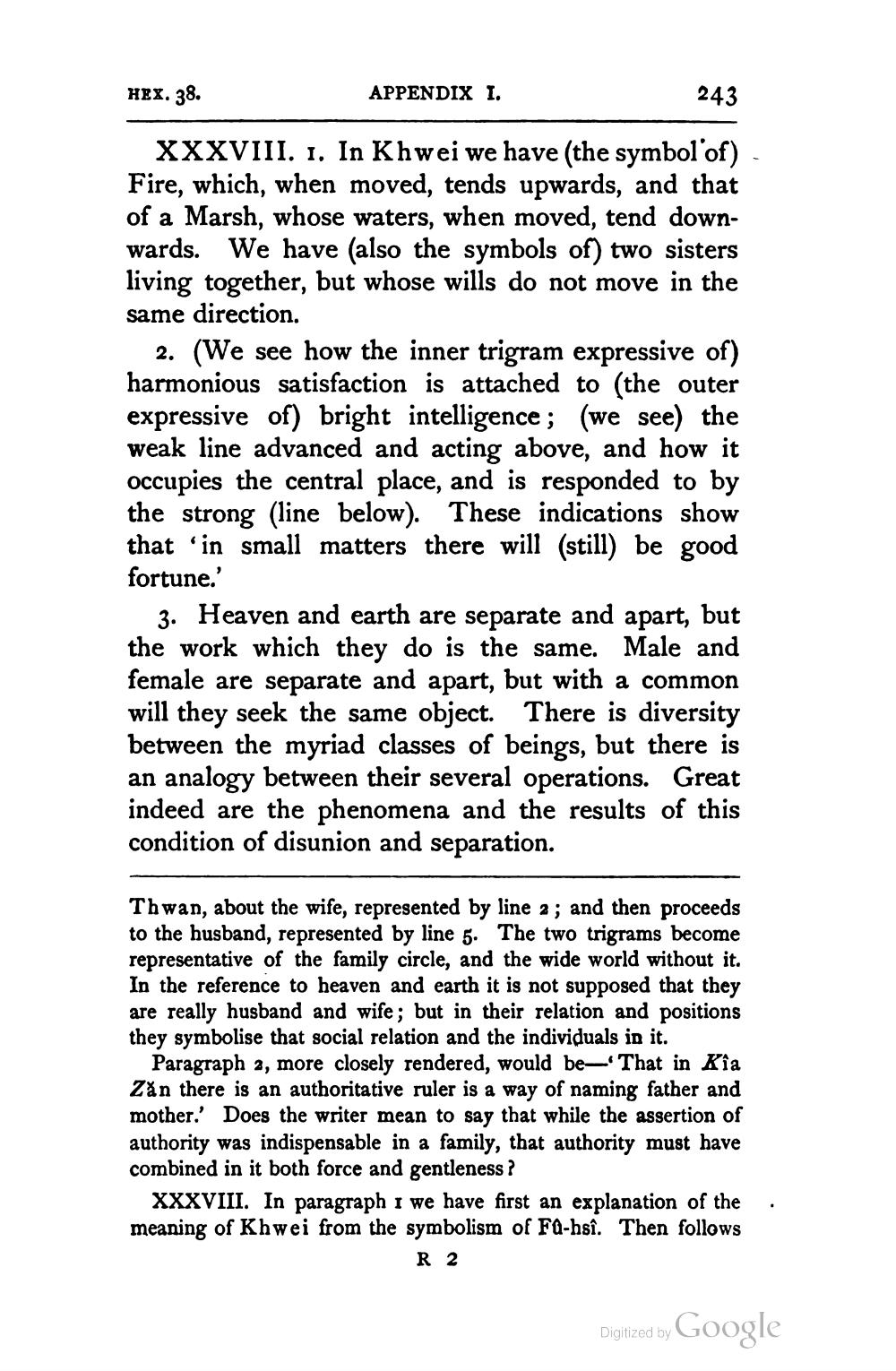________________
HEX. 38.
APPENDIX I.
243
XXXVIII. 1. In Khwei we have (the symbol of) Fire, which, when moved, tends upwards, and that of a Marsh, whose waters, when moved, tend downwards. We have (also the symbols of) two sisters living together, but whose wills do not move in the same direction.
2. (We see how the inner trigram expressive of) harmonious satisfaction is attached to the outer expressive of) bright intelligence; (we see) the weak line advanced and acting above, and how it occupies the central place, and is responded to by the strong (line below). These indications show that 'in small matters there will (still) be good fortune.'
3. Heaven and earth are separate and apart, but the work which they do is the same. Male and female are separate and apart, but with a common will they seek the same object. There is diversity between the myriad classes of beings, but there is an analogy between their several operations. Great indeed are the phenomena and the results of this condition of disunion and separation.
Thwan, about the wife, represented by line 2; and then proceeds to the husband, represented by line 5. The two trigrams become representative of the family circle, and the wide world without it. In the reference to heaven and earth it is not supposed that they are really husband and wife; but in their relation and positions they symbolise that social relation and the individuals in it.
Paragraph 2, more closely rendered, would be — That in Kia Zăn there is an authoritative ruler is a way of naming father and mother.' Does the writer mean to say that while the assertion of authority was indispensable in a family, that authority must have combined in it both force and gentleness?
XXXVIII. In paragraph 1 we have first an explanation of the meaning of Khwei from the symbolism of FQ-hsî. Then follows
R2
.
Digitized by Google




